
7 AI-Powered Talent Demand Forecasting Tools for HR
Stop guessing your hiring needs. These AI tools predict talent gaps months ahead, so you can build teams before competitors know what's missing.

Written by
Adam Stewart
Key Points
- Spot critical skills shortages 6-12 months before they impact your business
- Replace annual workforce plans with real-time talent demand tracking
- Choose tools that work with your existing HR systems and data sources
- Turn reactive scrambling into strategic talent pipeline building
Predicting future talent needs is crucial for organizations to align their workforce with strategic goals, identify potential gaps, and develop strategies to address them. AI-powered tools are essential for accurate talent demand forecasting as they can analyze large data sets, identify patterns, and make precise predictions.
Here are 7 AI-powered talent demand forecasting tools for HR:
| Tool | Key Features |
|---|---|
| Beamery | Dynamic workforce planning, skills intelligence, real-time insights |
| Gloat | Identifies critical roles and skills, proactive sourcing and recruitment |
| Visier | Predictive analytics, skills gap analysis, optimal training programs |
| SmartRecruiters | Demand forecasting, talent pipeline management, AI-driven hiring |
| Lever | AI-driven talent pipeline insights, succession planning, training programs |
| Workday | Real-time forecast adjustments, dynamic workforce planning |
| Oracle HCM Cloud | Predictive analytics, real-time forecast adjustments, skills gap analysis |
When choosing a tool, consider forecasting accuracy, user-friendliness, integration with existing HR systems, customization options, and support.
Related video from YouTube
Quick Comparison
| Tool | AI-powered Talent Demand Forecasting Features | Other Notable Features | Pricing/Availability |
|---|---|---|---|
| Beamery | Dynamic workforce planning, skills insights, real-time data | Talent pipeline management, succession planning | Custom pricing for enterprises |
| Gloat | Identifies critical roles and skills, proactive sourcing and recruitment | Talent strategy alignment, people-focused approach | Custom pricing for enterprises |
| Visier | Predictive analytics, skills gap analysis, optimal training programs | Workforce planning, talent development | Custom pricing for enterprises |
| SmartRecruiters | Demand forecasting, talent pipeline management, AI-driven hiring | Recruitment marketing, candidate management | Custom pricing for enterprises |
| Lever | AI-driven talent pipeline insights, succession planning, training programs | Recruitment marketing, candidate management | Custom pricing for enterprises |
| Workday | Real-time forecast adjustments, dynamic workforce planning | Financial management, human capital management | Custom pricing for enterprises |
| Oracle HCM Cloud | Predictive analytics, real-time forecast adjustments, skills gap analysis | Talent management, recruitment, performance management | Custom pricing for enterprises |
AI is transforming how companies plan and manage their workforce, enabling data-driven decisions, identifying skill gaps, streamlining processes, driving business growth, and building agile and responsive workforces for a sustainable future.
7 AI Tools for Predicting Talent Needs
Forecasting future talent requirements is crucial for organizations. AI-powered tools can help HR professionals make accurate predictions, identify potential gaps, and develop strategies to address them. Here are 7 AI-powered talent demand forecasting tools for HR:
1. Beamery
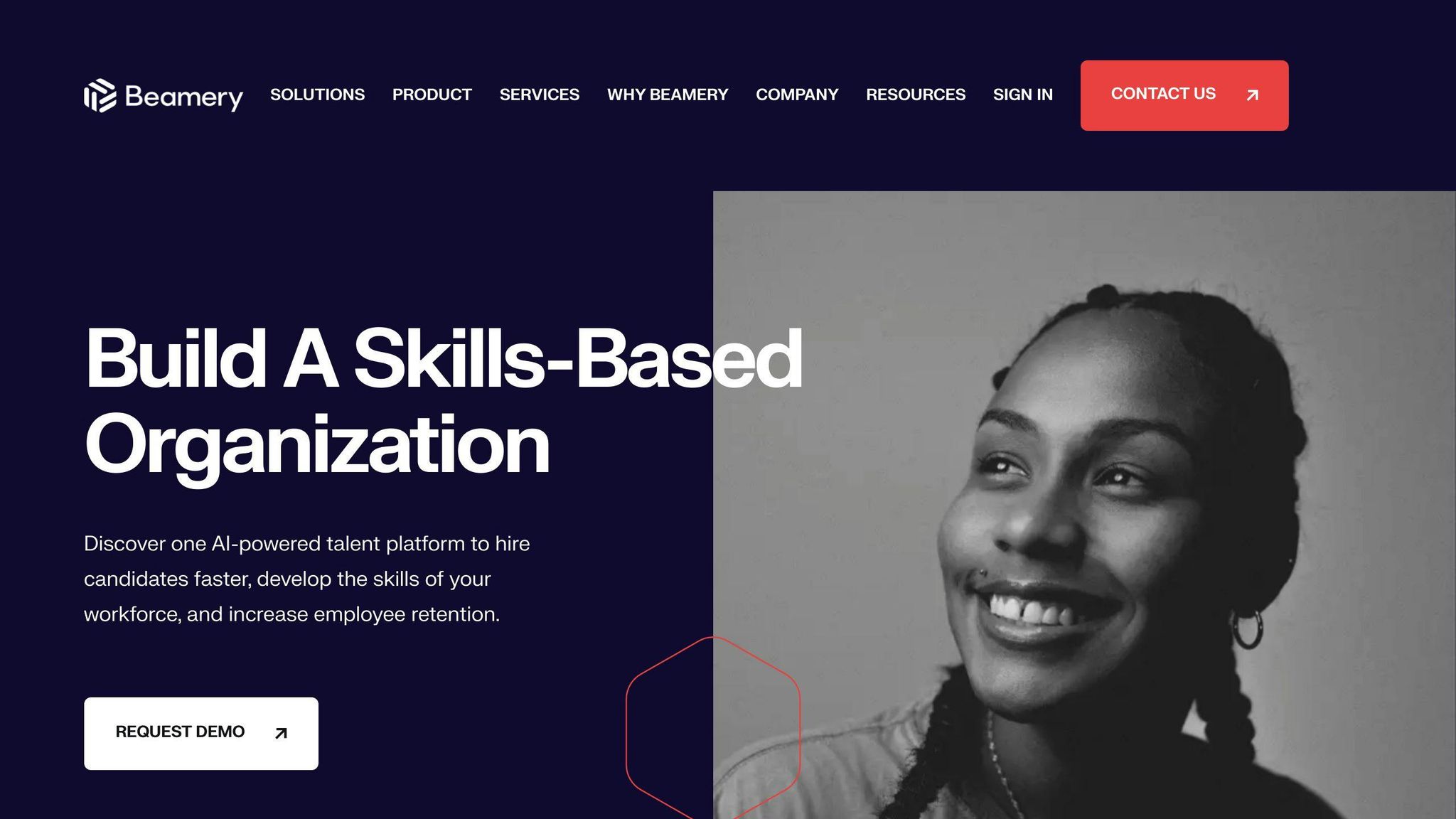
Beamery offers dynamic workforce planning and skills intelligence. Its AI-driven platform provides real-time insights, enabling managers to refine hiring requirements, consider additional skills, or review job architecture.
2. Gloat

Gloat aligns talent strategies with business needs through its AI platform, emphasizing a people-first approach. Its technology helps identify critical roles and skills that may be in short supply, enabling proactive sourcing and recruitment strategies.
3. Visier

Visier enables HR managers to analyze data for better workforce planning decisions, utilizing AI for predictive insights. Its platform helps identify existing competencies, skills gaps, and optimal training programs.
4. SmartRecruiters
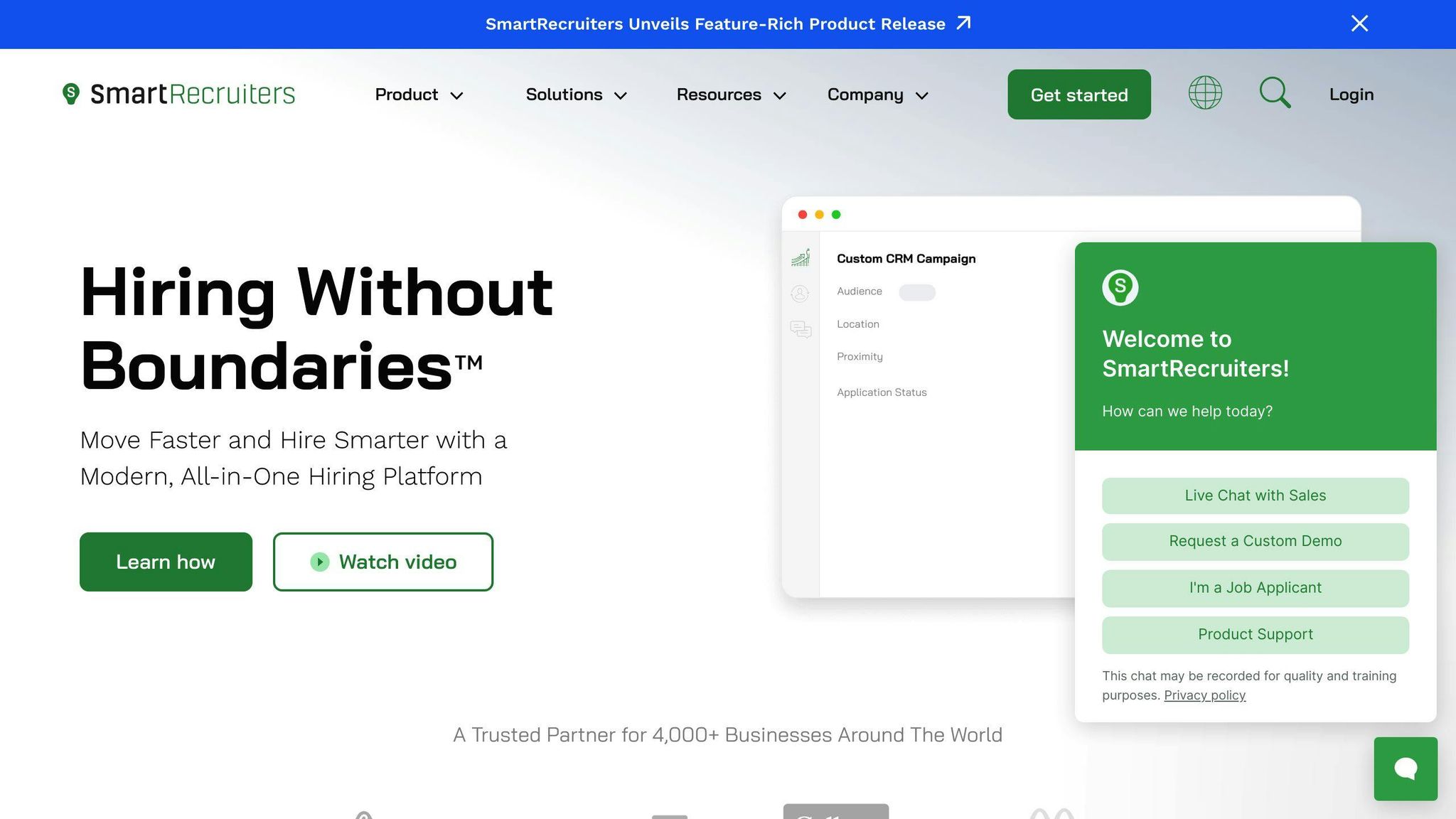
SmartRecruiters optimizes talent acquisition using AI, making it easier to forecast demand and streamline hiring. Its platform provides data-driven predictions, enabling HR to model various hiring scenarios and determine optimal workforce size and composition.
5. Lever
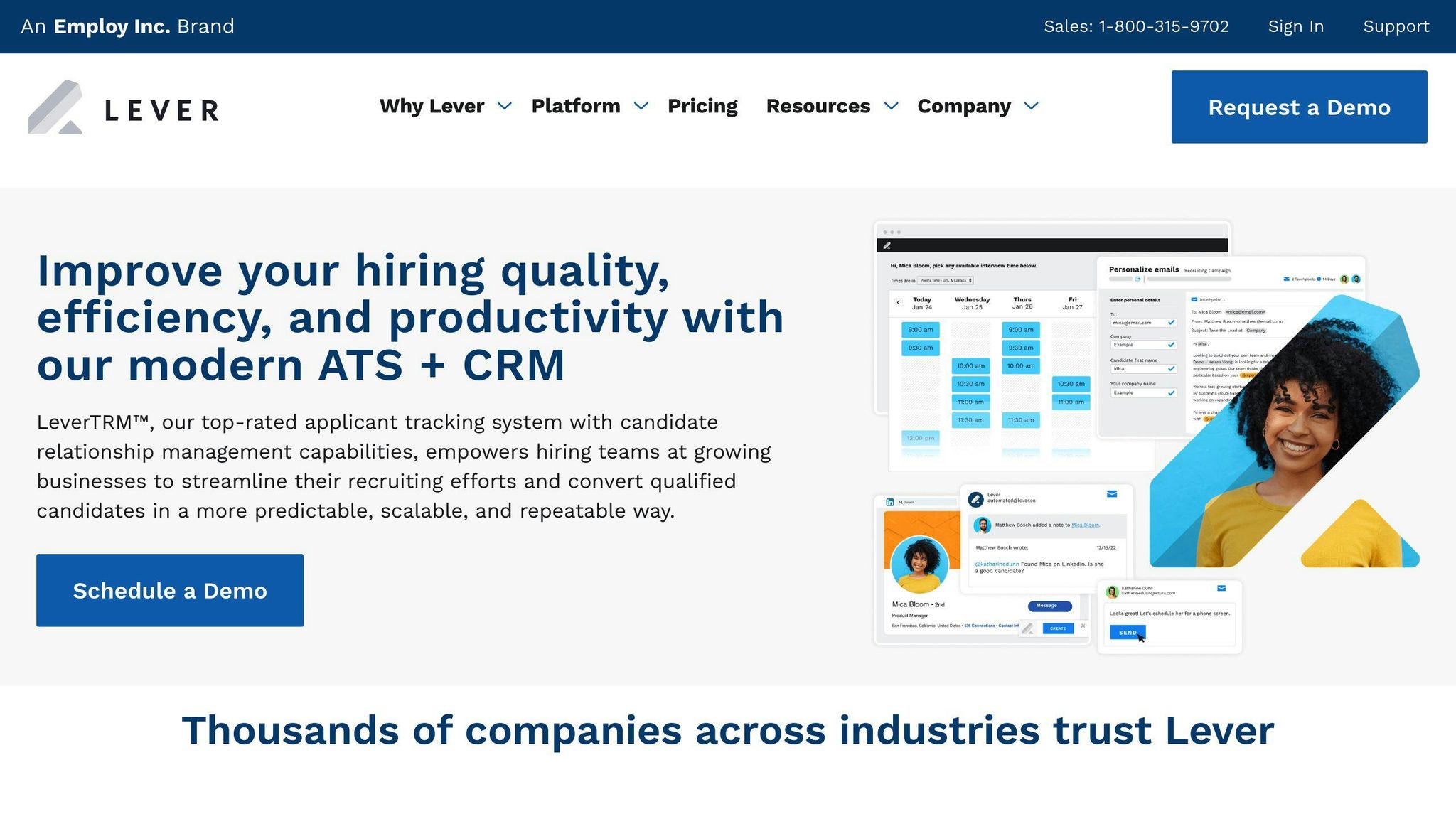
Lever offers AI-driven insights into the talent pipeline, aiding HR in identifying future talent needs and potential skills gaps. Its platform helps develop targeted training programs and solid succession plans.
6. Workday
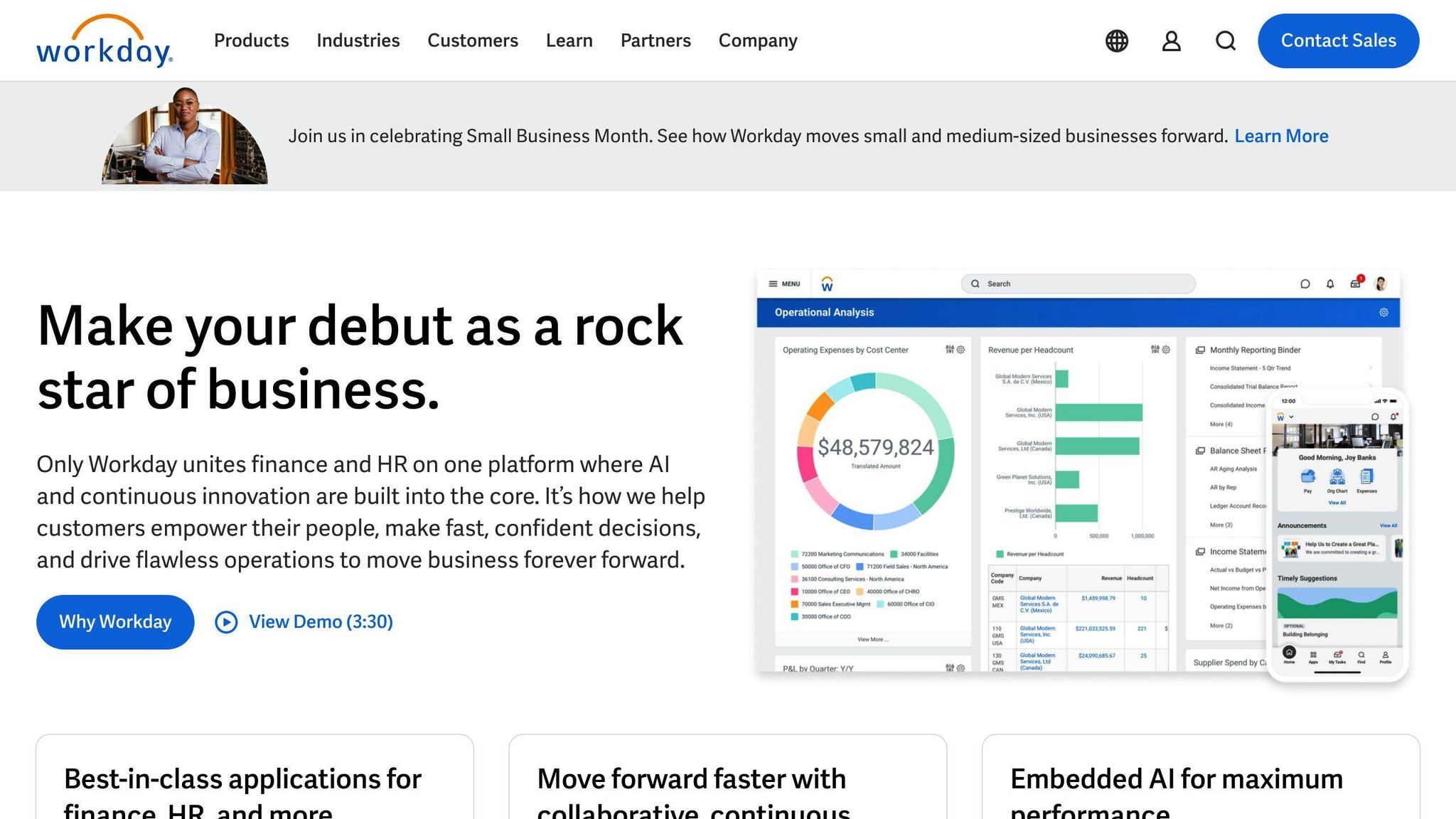
Workday's AI capabilities help HR teams forecast staffing needs and manage workforce planning dynamically. Its platform provides real-time adjustments to forecasts, enabling HR to adapt to changing business conditions.
7. Oracle HCM Cloud
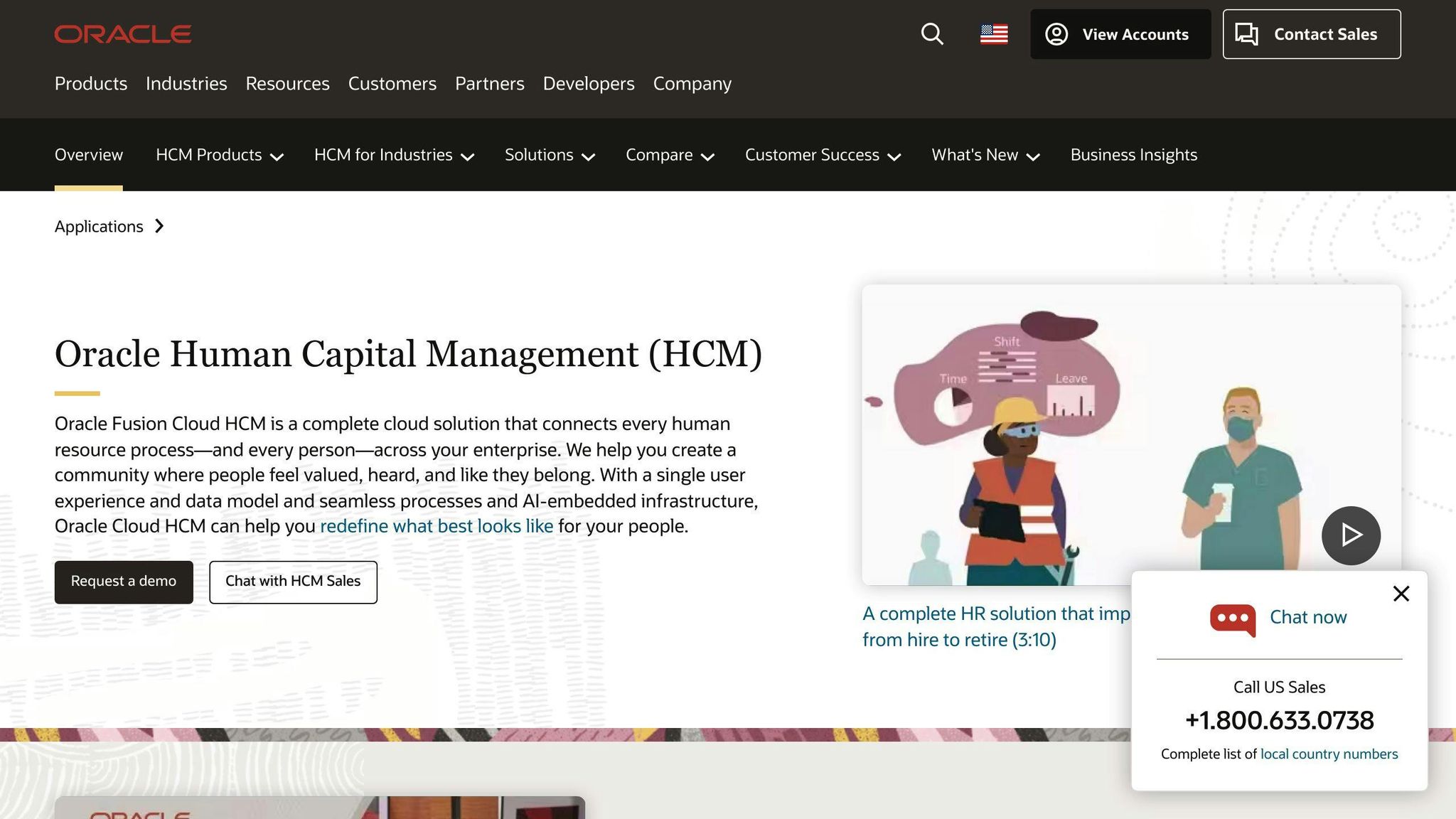
Oracle HCM Cloud uses AI to enhance workforce planning, offering predictive analytics and real-time forecast adjustments. Its platform helps identify critical roles and skills, enabling proactive sourcing and recruitment strategies.
| Tool | Key Features |
|---|---|
| Beamery | Dynamic workforce planning, skills intelligence, real-time insights |
| Gloat | Aligns talent strategies with business needs, identifies critical roles and skills |
| Visier | Analyzes data for workforce planning, identifies skills gaps and training needs |
| SmartRecruiters | Optimizes talent acquisition, forecasts demand, streamlines hiring |
| Lever | Provides insights into talent pipeline, aids in succession planning |
| Workday | Forecasts staffing needs, manages workforce planning dynamically |
| Oracle HCM Cloud | Enhances workforce planning, offers predictive analytics and real-time adjustments |
sbb-itb-ef0082b
Tool Comparison
Comparing the 7 AI-Powered Talent Demand Forecasting Tools
The table below compares the key features, pricing, pros, and cons of the 7 AI-powered talent demand forecasting tools:
| Tool | AI-powered Talent Demand Forecasting Features | Other Notable Features | Pricing/Availability | Pros | Cons |
|---|---|---|---|---|---|
| Beamery | Dynamic workforce planning, skills insights, real-time data | Talent pipeline management, succession planning | Custom pricing for enterprises | Accurate forecasting, user-friendly | Limited HR system integration |
| Gloat | Identifies critical roles and skills, proactive sourcing and recruitment | Talent strategy alignment, people-focused approach | Custom pricing for enterprises | Strategic talent planning, excellent support | Steep learning curve |
| Visier | Predictive analytics, skills gap analysis, optimal training programs | Workforce planning, talent development | Custom pricing for enterprises | Data-driven insights, easy to use | Limited customization |
| SmartRecruiters | Demand forecasting, talent pipeline management, AI-driven hiring | Recruitment marketing, candidate management | Custom pricing for enterprises | Streamlined hiring, great candidate experience | Limited HR system integration |
| Lever | AI-driven talent pipeline insights, succession planning, training programs | Recruitment marketing, candidate management | Custom pricing for enterprises | Accurate forecasting, user-friendly | Limited customization |
| Workday | Real-time forecast adjustments, dynamic workforce planning | Financial management, human capital management | Custom pricing for enterprises | Comprehensive HR platform, excellent support | Steep learning curve |
| Oracle HCM Cloud | Predictive analytics, real-time forecast adjustments, skills gap analysis | Talent management, recruitment, performance management | Custom pricing for enterprises | Comprehensive HR platform, excellent support | Limited customization |
When choosing a tool, consider:
- Forecasting accuracy: Look for tools that provide precise predictions of future talent needs.
- User-friendliness: Choose tools with simple, easy-to-navigate interfaces.
- Integration: Consider tools that seamlessly integrate with your existing HR systems.
- Customization: Opt for tools that offer flexible customization to meet your organization's unique needs.
- Support: Select tools with excellent customer support for smooth implementation and ongoing assistance.
The Future of AI in HR
AI is changing how companies plan and manage their workforce. With AI tools for predicting talent needs, HR teams can make data-driven choices, find skill gaps, and plan ahead. AI will keep playing a big role in HR.
In the short term, more companies will use AI tools to streamline processes, improve efficiency, and drive business results. As AI technology gets better, we'll see more advanced predictive analytics. This will help organizations anticipate and respond to changing talent needs with greater accuracy.
In the long term, AI will transform HR, enabling companies to build more agile and responsive workforces. With AI insights, HR professionals can develop more effective talent strategies, drive business growth, and create a more sustainable future.
As you explore the AI tools outlined here, consider your organization's unique needs and goals. Which tools will help you achieve your objectives? How can you use AI to drive business outcomes and create a more sustainable future? The possibilities are endless.
Key Takeaways
| Benefit | Description |
|---|---|
| Data-Driven Decisions | AI tools provide data-driven insights for workforce planning and talent management. |
| Identify Skill Gaps | AI can analyze data to pinpoint current and future skill gaps in your workforce. |
| Proactive Strategies | AI enables proactive strategies to address future talent needs. |
| Streamline Processes | AI tools can streamline HR processes and improve efficiency. |
| Drive Business Growth | Effective talent strategies driven by AI can fuel business growth. |
| Build Agile Workforces | AI insights help organizations build more agile and responsive workforces. |
| Sustainable Future | AI can help create a more sustainable future for organizations. |
FAQs
What is the main tool used for workforce planning?
Scenario planning is the primary tool used during workforce planning. It allows organizations to anticipate and prepare for various potential future scenarios, ensuring they have the right talent in place to meet their business objectives.
In addition to scenario planning, AI-powered tools can also support workforce planning. These tools analyze large data sets, identify trends, and provide predictive insights to inform talent decisions. By using AI, organizations can make more accurate forecasts, reduce skill gaps, and optimize their workforce for future success.
When choosing an AI-powered workforce planning tool, consider the following factors:
| Factor | Description |
|---|---|
| Data Accuracy | The tool should provide accurate data and insights. |
| Scalability | The tool should be able to handle large amounts of data and grow with your organization. |
| User Experience | The tool should have an intuitive and user-friendly interface. |
| Integration | The tool should seamlessly integrate with your existing HR systems. |
It's crucial to select a tool that aligns with your organization's specific needs and goals.
Summarize with AI
Related Posts
10 Ways AI Streamlines Benefits Administration in HR
Discover how AI revolutionizes HR by enhancing employee experiences, ensuring compliance, and streamlining benefits administration for improved efficiency and satisfaction.
AI Project Management Tools: 2024 Integration Guide
Explore the transformative impact of AI project management tools in 2024, including automation, data-driven insights, and risk management strategies for enhanced efficiency.
10 Best AI Customer Service Analytics Tools 2024
Explore the top 10 AI customer service analytics tools for 2024, benefits of AI in customer service, key features to consider, user ratings, pricing models, and expert insights. Choose the right tool for personalized support, efficient operations, and improved satisfaction.
AI for HR Compliance: Monitoring & Reporting
Discover how AI can streamline HR compliance through monitoring, reporting, and training. Learn the steps to implement AI in compliance processes.
